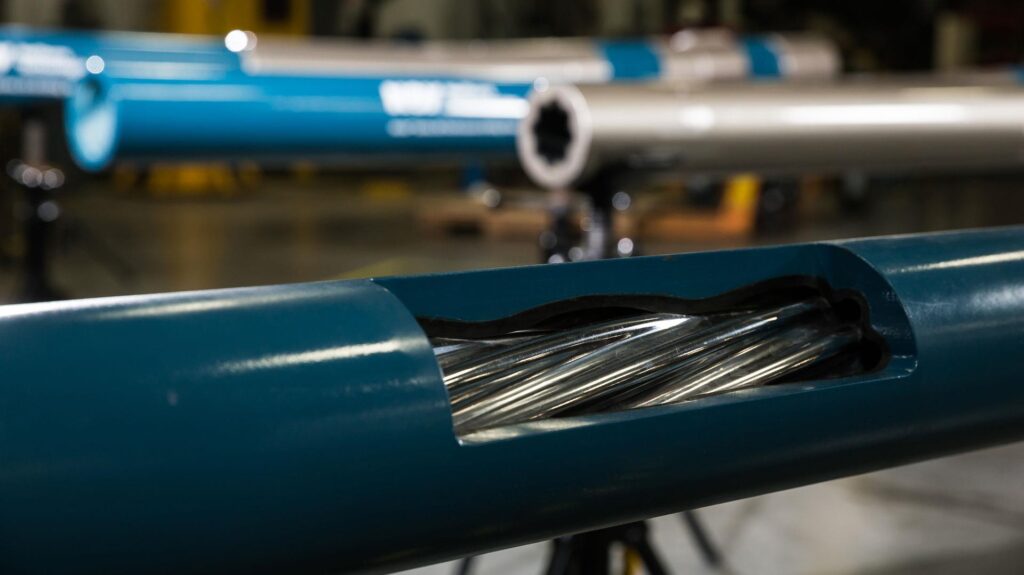
Introduction
Horizontal Directional Drilling (HDD) is a trenchless method used for installing underground pipelines, cables, and conduits with minimal surface disruption. One of the key components that make this method effective is the HDD mud motor. This advanced tool is essential for drilling through hard terrains and rocks, providing the torque and power needed for the job. In this comprehensive guide, we will delve into the intricacies of how HDD mud motors work, their components, advantages, and maintenance tips.
What is an HDD Mud Motor?
An HDD mud motor is a hydraulic motor used in directional drilling applications. It converts hydraulic energy from the drilling fluid, commonly known as mud, into mechanical energy to rotate the drill bit. This motor is especially effective in hard rock formations where conventional drilling methods may not be as efficient.
Types of HDD Mud Motors
There are different types of HDD mud motors available in the market, each designed for specific drilling conditions. The most common types include:
Positive Displacement Motors (PDMs): These are the most commonly used mud motors, suitable for a wide range of drilling conditions.
Turbine Motors: These are used for specialized applications and are known for their high RPM capabilities.
Electrical Downhole Motors: These are relatively new and are used in highly specialized drilling operations.

How Does It Work?
Components
The primary components of an HDD mud motor include the stator, rotor, and a bent housing that provides directional control. These components work in harmony to generate the torque required for drilling.
Stator
The stator is a fixed component that guides the rotor. It is usually made of a rubber-like material and has helical lobes inside.
Rotor
The rotor is the moving part inside the stator. It also has helical lobes but fewer than the stator. When the drilling fluid passes through, the rotor turns within the stator, generating torque.
Bent Housing
The bent housing is a critical component for directional control. It is usually set at a specific angle, often between 1 to 3 degrees, which allows the driller to steer the bit in the desired direction.
The Role of Drilling Fluid
Drilling fluid or mud plays a crucial role in the functioning of HDD mud motors. The fluid is pumped through the motor, creating pressure that activates the rotor. This, in turn, rotates the drill bit, allowing it to cut through hard materials like rock.
Types of Drilling Fluids
Different types of drilling fluids can be used, depending on the drilling conditions. Water-based muds are commonly used, but oil-based and synthetic muds are also available for specific applications.
Directional Control
The bent housing of the motor allows for directional control. By adjusting the angle of the bend, drillers can steer the drill bit in the desired direction, making HDD mud motors an invaluable tool for directional drilling.
Advantages of Using HDD Mud Motors
Increased Torque
HDD mud motors provide increased torque, which is essential for drilling through hard terrains. This instantly enhances the efficiency of the drilling process.
Cost-Effectiveness
While HDD mud motors may seem costly upfront, their ability to drill through hard materials reduces the time and labor costs, making them a cost-effective choice in the long run.
Versatility
These motors are versatile and can be used with various types of drill bits and HDD rigs, making them suitable for a wide range of drilling jobs.
Environmental Benefits
HDD mud motors are more environmentally friendly compared to traditional drilling methods. They require less surface disruption and reduce the risk of inadvertent returns of drilling fluid to the surface.
Maintenance and Service
Proper maintenance is essential for the longevity of HDD mud motors. Regular service checks and following the manufacturer’s guidelines can extend the motor’s service life, reducing long-term costs.
Common Maintenance Tips
- Regular Inspection: Check for wear and tear on the rotor and stator.
- Clean the Motor: Always flush the motor with clean water after each use to remove any residual mud.
- Follow Manufacturer Guidelines: Always adhere to the manufacturer’s maintenance schedule for optimal performance.
Conclusion
HDD mud motors are an integral part of the directional drilling industry. Their advanced components and the extensive use of drilling fluid make them highly effective for drilling through hard terrains. By understanding how these motors work, their advantages, and maintenance requirements, one can make an informed decision for their drilling needs.